I was recently asked to provide examples of innovative and supportive actions from my own experience and then to identify how these may be embedded into an educational programme. This is a blog loosely based on the presentation that I gave.
I use a Pecha Kucha style and lots of pictures so is easier to digest. I thought I'd share it here for anyone with a similar interest to my own who may also be invested in using the creative arts in teaching, learning and research.
So my presentation plan was to:
1. highlight a recent report from the Higher Education Academy in relation to
innovation in education.
2. mention a few cycles that may be useful in innovative learning processes
3. share some ways in which I have used innovation within my practice
4. outline some of the benefits that may accrue from using innovative, flexible,
creative arts in an evaluative approach to teaching, learning and research.
I always live in hope of divine inspiration and took this picture while sitting on the loo at a local Church I should add that I find both of these places to be inspirational!
However the type of inspiration I’m going to talk about in this blog doesn’t hail from the heavens but is grounded in our lived experience. Interestingly, the Higher Education Academy (HEA) and the Council of Deans of Health commissioned a review of innovation in teaching and learning noting that although there was ‘a substantial range of innovative practices being implemented in healthcare HE’ the majority had not been included in the evidence base simply because they were not formally evaluated (Dearnley et al, 2013 p21).
So why was this? Well according to the HEA ‘Innovation requires more than just new ideas. It needs the kind of culture that is conducive to sustainable innovation, one that enables it to become part of an organisations internal structure.’ Similarly, some Universities Learning & Teaching Plans also aim to promote excellence through the creation of a 'culture' of enhancement.
This kind of 'culture' could in the words of Spock enable us all ‘to live long and prosper’ but…
One size definitely does not fit all, so our praxis, or to put it another way our practice that is drawn from theory, has to be flexible enough to meet the different needs of the diverse people we are working with.
So I’d like to begin by suggesting a few cycles that may sustain us in and through any learning process given that as Freire (1970) so rightly said 'there is no teaching without learning'. You don’t need to worry though as these are not vicious cycles but productive ones.
I’d like to start with the Participatory Action Research or PAR. This consists in its simplest form of planning, doing, evaluating and reviewing and is undertaken as a group and not an individual process. PAR is applicable across a range of subjects areas, particularly as the people with the most to gain from any changes are also the best people to involve. PAR is rooted in real world practice and works best when everyone affected is involved. Lastly, PAR is facilitative of social change through the actions taken.
PAR can help to build the evidence base for what works when we work to make change happen and importantly why and how. The actions above follow from and are followed by reflection on 'problems' with the people involved, travelling the path together.
For all these reasons PAR is useful from an improvement perspective, though often the benefits are greater due to the learning that takes place. Skills can be both developed and honed during the participatory process in partnership with the people taking part. I advocate and actively support PAR's use in the evaluation of teaching, learning and research as for me (and the majority of people I work with) it facilitates social change to happen from the ‘bottom up’ and not the ‘top down’.
Leading from the top is sadly often the case in many organisations and communities. However, top down change often does not reflect the needs of people at the bottom. With bottom up processes the self defined needs of the people are central to the process of change.
This for me is the right way. It follows what Ignacio Martin-Baro (1996) said about our needing to turn the whole of psychology on its head in order to stand in solidarity with people on the ground and to look up together from there. This is my aim when using participatory practice to understand people's take on the 'problem' and not my own.
The second cycle, the experiential learning cycle was developed by Boud, Keogh and Walker in 1985 (p.36) and is pictorially represented here. Experience in learning combines behaviour, ideas and feelings and all of these aspects need to be examined from diverse people's perspectives in relation to their intention as this impacts on each stage of the learning process. Our intentions are influenced by our thoughts and feelings both of which can help or hinder us.
Boud et al. (1985) thought that our feelings were an important part of experiential learning and this is something that I particularly welcome as a Critical Community Psychologist because all too often we fail to take account of our feelings as well as our actions and thoughts. We are often so concerned with getting things done that we lose sight of our and other people's feelings in the process and this can negatively impact on our-selves and the people we are working with.
The third cycle or should I say cycles are the ‘cycles of power’ developed by Pam Levin-Landheer (1982). These were expanded on by Jean Illsley Clarke (1998) to include positive affirmations that we can give to each other and are useful when supporting people in their personal development. Understanding our developmental process fosters reflection on our experience to gain a richer understanding of personal, interpersonal and group process.
This can also support people in identifying their needs and having them met it in a productive way. I have used this when working with diverse people as an aid to awareness raising in relation to the developmental process we were engaged in.
I've also used if for myself in order to understand and reflect on aspects of my-self and gaps in my self knowledge as both a person and a parent. We all have parts of ourselves that we don't fully understand so being able to see how, what, where and why we are the way we are and what I can actively do to support my-self in filling my gaps is worth it, as like everyone else when I know better I do better.
Whilst all of these cycles rely heavily on our communication skills, that are themselves culturally informed, it is worth noting that
its not only spoken languages that we learn from. A large part of our interpersonal communication is non verbal.
This is one of the reason’s why I am suggesting that we use creative arts as a hands on aid to both learning and communication processes. Other reasons include creative arts being a great way to share our feelings and thoughts with each other, they can also reveal things we didn't know about our-selves. Creative arts also enhance the learning of transferable skills such as those needed for innovation and social change.
In addition, having recourse to more hands on and less tick box type evaluations uses technology that is readily available.
One example of this is participatory video production or PVP. Click the link to see a PVP made by an artist Cedoux Kadima and some young people from Leeds Dynamix, of a poem I wrote in response to the Home Office, G4S and the Government entitled My Heart Lies Bleeding this helped me to release my anger and it resonated with the people I was with. Sometimes we share more than we know and creative arts helps us to know and to see when this is happening but returning to PVP for a minute longer......
........the picture above shows a democratic process of choosing the focus of two planned PVP’s. Each person had three votes and the films with the most votes were made. Of the two that were made, the first showed what the world would be like if there were no gender differences and the second highlighted the impact that various forms of discrimination have upon people in their daily life. Both films were powerful to make and to watch.
Another way through which our experience can be documented is through co-developing our own tools. This picture shows a body-mapping evaluation tool (B-mET) that was developed by myself and members of the So What's Changed? Evaluation Team.
Body-mapping started in South Africa as a result of the HIV and AID’s epidemic and was often used a way for people to memorialise their life. The B-mET process maps the past, present and hoped for future of the person in relation to their lifelong learning and evaluates an organisation at the same time from the person's perspective.
You can see that some use pictures as well as words to document the person's experience. This can be useful when people do not write in both their mother tongue and / or English as it supports the person in putting their experience across. A picture really can paint a thousand words!
Even when we are doing a data analysis of the body-maps we can present what we see using pictures, as well as written words to show people what was found when all of the pictures and words in the body-maps were put together. There were nine body-maps in total but only four are presented here as examples.
This is one of the Collective Communication Collages that were made when the pictures and written words from all the body-maps were gathered together. This data analysis process used what is called a thematic approach, looking for themes across all of the collective pictures and words. As these were so varied they were formed into continuum's rather than themes.
Like the continuum slow to fast, they contain different categories within them, for instance 'very fast' or 'very slow' would be points on the continuum or the line form fast to slow. So the categories are just points on a line from one place to another.
The category shown in the Collective Communication Collage above is taken from the continuum 'Knowing – learning – skills – not knowing'. This category relates to the negation of human rights – human rights - and hoped for future. Interestingly when we asked the question what matters most to people when they engage in activities with a community organisation, the answer very clearly given was their individual and collective human rights.
Another way to document and present a lot of categories is by creating a Mind Map. This was one of the Mind Maps created when a focus group was analysed (again searching for categories and themes) to help us understand the individual and collective experience of the people who took part in the So What's Changed? Participatory Evaluation of a community organisation. This is the same project that the Body-maps above came from.
The software to make these Mind Maps is freely available on the internet. The strength of connection between categories and groups can be illustrated by varying the thickness of the lines connecting one category to another in the map. This can be very useful when attempting to make sense of complex categories drawn from a range of people and works best when undertaken with a small group of people though it can be used individually.
Having said all of the above, there really is no replacement for lived experience as I hope the picture's above and below will show. This is Experiential Human Rights Training co-developed with people who have a learning disability that was co-delivered with the help of a couple of people, a golfing umbrella (with buttons sewn on) and a set of laminated pictures (each with a loop of string attached) that represented each of the human rights contained within the Universal Declaration of Human Rights.
The process we developed is outlined here as others may want to use it for themselves. Presentation 1: On the way into the room people are asked to select a couple of pictures and when the same picture came up on the Human Rights presentation the person who chose it is invited to hang their picture on the outside of the umbrella, looping the string over the buttons that were stitched on for this purpose. The person is then invited to hold the umbrella to see what it feels like to have their Human Rights all around them.
Presentation 2: People are then invited to chose pictures for the second time, when hanging their pictures people are invited to share the reason why they chose the picture that they did, with the rest of the group, only if they are willing of course. The dialogues that take place as a result of this sharing of lived experience are invaluable in making Human Rights come to life in our experiences. It's helpful to see them this way to make this connection.
It's a little known fact that organisations performing public functions (including privately owned organisations) have to abide by the Human Rights Act (1998) when they deliver services to us although many sadly do not. If we all knew our rights and how to put them into practice, through advocating for ourselves and others, then our services could be greatly improved for the people who both use and provide them.
Other innovative teaching methods include the use of mobile phones to teach attachment theory. Each person in the class is asked
to lock their phone and then give it to a friend or someone they would trust to take care of it. This friend is then asked to give the
phone to someone that the person does not know or may not trust. This all takes place within a classroom environment.
The reaction from young people was a measure of their attachment to their phones and to be honest not surprising!
In addition, I have given out un-boiled eggs asking students to take care of them for a period of one week, making sure to take the eggs everywhere with them despite the risk of them cracking. When students returned the egg (hopefully) unbroken a week later they each received a crème egg as a reward for their efforts.
The level and style of attachment students developed with the egg provided much food for thought (pun intended). Some students made their eggs thrones to sit on or bed to lie in and the competitive element between them was fun and made sure that attachment theory was remembered when it came to the exam.
This experiential learning can be further illuminated through the introduction of associated behaviours such as passive, aggressive, manipulative and assertive calculated using a behavioural questionnaire that provides a snap shot of each of these four behaviours. These are then mapped onto life positions using an I’m ok – You’re ok framework shown in the picture above.
This can be useful for developing awareness of self and others, the positions from which we communicate and their impact on other people for instance when we adopt a one up or one down position.
I have also used poetry in addition to dicta-phone diaries as a way for students to document and then reflect on their lived experience.
Taking a poem such as ‘Still I Rise’ by Maya Angelou and then inviting students to use a line to formulate their own poems can
heighten awareness of both self and other.
Poetry can also be used as an aid to data analysis in the form of ‘I poems’ constructed from transcripts taken from individual interviews
and focus groups as developed by Carol Gilligan et. al. in 1982. The resulting poems are useful for reflecting on the different voices of
the speaker and can also give insight into the persons subconscious motivations.
More recently myself and a co-researcher Anthony Jones adapted Gilligan’s ‘I poems’ into ‘Expanded I poems’ including ‘It poems’ for the objectified I and you, we and they poems documenting experience across the personal, interpersonal, group and communities lived experience respectively that could then be compared across and between groups.
The above picture presents a small selection of the I, It, You, We and They poems that came out of people's experiences of taking part in the evaluation that used participatory video production and body-mapping. It was important to know whether this approach 'fitted' with the diverse people involved in this participatory process in order to improve it and build on what we'd learned together.
Poetry can also form the basis of collective action in relation to anti-oppressive praxis and lets face it if you don't take the time (and space) to write your own story then someone may well do it for you and it may not be what you wanted, so best to hear your own voice while you still can.
Photovoice is also an excellent tool for specific inquiries on a particular subject area and has been used to good effect when looking at lived experience, documenting difference and similarities across individuals and groups through a reflective process whereby the person or group speak to the photo. This can feel less intimidating to the person being interviewed and can be undertaken in pairs or small groups and has the capacity to aid self reflection and heighten awareness.
Theatre of the oppressed is inspirational when challenging oppressive praxis as an aid to people learning through experience, for instance, when visited by the Home Office (HO) a group of young people in the asylum process turned the tables on the person who was then in charge of the HO, treating them as they had been treated. They didn’t catch on to what was happening until one of the young people asked to see his teeth to check his alleged age, something that HO workers had done to young people during their immigration interview when the young person's age was being disputed by the HO
.
Finally in terms of raising the person’s awareness the ‘White Knapsack of privilege’ can help to demonstrate the preferential treatment
that White people receive in stark contrast to the treatment that people from Black and Ethnic Minority groups are often subjected to.
This can be coupled with physical exercises that illustrate why White people only tend to pay attention to and listen to the voices of
other White people and often do not have meaningful contact with diverse people in their daily life.
So what difference might all of the above make when it is used to support learning, teaching and research? What might the benefits be? Well here are a few that I have observed.
We would have teaching and learning that is in-form-ed by research and evaluation and that doesn't just come from the 'thoughts' of middle class White men and in addition a curriculum that is not populated by White men and women but reflects the Ethnic diversity of Black and Brown and yes White people in our societies.
I refuse to use the term Black and Ethnic Minority groups any more as White people are in the minority in relation to the World population but sadly despite this they, more often than not, hold and wield vast economic and social privilege and power.
All of the above could aslo enrich and enhance diverse people's experience as our practice would be informed by evaluation and experience and the curriculum would be individualised and specific to the different needs of diverse learners.
In addition evaluation, teaching and learning would be enhanced through using technology and innovative feedback as assessment and evaluation tools.
Even something as simple as using Survey Monkey to check on people's experience as a part of a participatory learning and development process can positively impact on the experience. When we are heard and feel able to influence the teaching, learning and evaluation process then we are more likely to remain involved. This can support the retention of people in the process, including people who had a hard time when they were at school (as I did) as they are then able to influence what they learn and how they learn it.
This recognises the power of people to break the chains of oppression and take action on their own behalf both as individuals and as a collective!!!
Secondly, people develop transferable applied skills, diversifying their learning to incorporate self reflection, development
and evaluation as part of a reflexive educational process. This supports work based learning, raises self and inter-personal awareness, and can help to improve our emotional intelligence.
This can also improve the picture that we have of ourselves and others fostering self esteem and supporting us to become empowered through experience as we acquire new skills and abilities that we can apply in other spaces.
Lastly, this supports inclusivity, equality and most importantly equity in the learning process through widening and sustaining participation, recognising the prior lived experience of people and their diverse needs and supporting the redesign of the process to better meet their needs, in addition to supporting the uptake of technology. This increases the flexibility of learning approaches that are used and fosters collaborative team teaching, learning and development as part of a lifelong process.
.....and I'd like to say a BIG THANK YOU to you the reader, for making it this far :-)
I use a Pecha Kucha style and lots of pictures so is easier to digest. I thought I'd share it here for anyone with a similar interest to my own who may also be invested in using the creative arts in teaching, learning and research.
So my presentation plan was to:
1. highlight a recent report from the Higher Education Academy in relation to
innovation in education.
2. mention a few cycles that may be useful in innovative learning processes
3. share some ways in which I have used innovation within my practice
4. outline some of the benefits that may accrue from using innovative, flexible,
creative arts in an evaluative approach to teaching, learning and research.
I always live in hope of divine inspiration and took this picture while sitting on the loo at a local Church I should add that I find both of these places to be inspirational!
However the type of inspiration I’m going to talk about in this blog doesn’t hail from the heavens but is grounded in our lived experience. Interestingly, the Higher Education Academy (HEA) and the Council of Deans of Health commissioned a review of innovation in teaching and learning noting that although there was ‘a substantial range of innovative practices being implemented in healthcare HE’ the majority had not been included in the evidence base simply because they were not formally evaluated (Dearnley et al, 2013 p21).
So why was this? Well according to the HEA ‘Innovation requires more than just new ideas. It needs the kind of culture that is conducive to sustainable innovation, one that enables it to become part of an organisations internal structure.’ Similarly, some Universities Learning & Teaching Plans also aim to promote excellence through the creation of a 'culture' of enhancement.
So I’d like to begin by suggesting a few cycles that may sustain us in and through any learning process given that as Freire (1970) so rightly said 'there is no teaching without learning'. You don’t need to worry though as these are not vicious cycles but productive ones.
I’d like to start with the Participatory Action Research or PAR. This consists in its simplest form of planning, doing, evaluating and reviewing and is undertaken as a group and not an individual process. PAR is applicable across a range of subjects areas, particularly as the people with the most to gain from any changes are also the best people to involve. PAR is rooted in real world practice and works best when everyone affected is involved. Lastly, PAR is facilitative of social change through the actions taken.
PAR can help to build the evidence base for what works when we work to make change happen and importantly why and how. The actions above follow from and are followed by reflection on 'problems' with the people involved, travelling the path together.
For all these reasons PAR is useful from an improvement perspective, though often the benefits are greater due to the learning that takes place. Skills can be both developed and honed during the participatory process in partnership with the people taking part. I advocate and actively support PAR's use in the evaluation of teaching, learning and research as for me (and the majority of people I work with) it facilitates social change to happen from the ‘bottom up’ and not the ‘top down’.
Leading from the top is sadly often the case in many organisations and communities. However, top down change often does not reflect the needs of people at the bottom. With bottom up processes the self defined needs of the people are central to the process of change.
This for me is the right way. It follows what Ignacio Martin-Baro (1996) said about our needing to turn the whole of psychology on its head in order to stand in solidarity with people on the ground and to look up together from there. This is my aim when using participatory practice to understand people's take on the 'problem' and not my own.
The second cycle, the experiential learning cycle was developed by Boud, Keogh and Walker in 1985 (p.36) and is pictorially represented here. Experience in learning combines behaviour, ideas and feelings and all of these aspects need to be examined from diverse people's perspectives in relation to their intention as this impacts on each stage of the learning process. Our intentions are influenced by our thoughts and feelings both of which can help or hinder us.
Boud et al. (1985) thought that our feelings were an important part of experiential learning and this is something that I particularly welcome as a Critical Community Psychologist because all too often we fail to take account of our feelings as well as our actions and thoughts. We are often so concerned with getting things done that we lose sight of our and other people's feelings in the process and this can negatively impact on our-selves and the people we are working with.
The third cycle or should I say cycles are the ‘cycles of power’ developed by Pam Levin-Landheer (1982). These were expanded on by Jean Illsley Clarke (1998) to include positive affirmations that we can give to each other and are useful when supporting people in their personal development. Understanding our developmental process fosters reflection on our experience to gain a richer understanding of personal, interpersonal and group process.
This can also support people in identifying their needs and having them met it in a productive way. I have used this when working with diverse people as an aid to awareness raising in relation to the developmental process we were engaged in.
I've also used if for myself in order to understand and reflect on aspects of my-self and gaps in my self knowledge as both a person and a parent. We all have parts of ourselves that we don't fully understand so being able to see how, what, where and why we are the way we are and what I can actively do to support my-self in filling my gaps is worth it, as like everyone else when I know better I do better.
This is one of the reason’s why I am suggesting that we use creative arts as a hands on aid to both learning and communication processes. Other reasons include creative arts being a great way to share our feelings and thoughts with each other, they can also reveal things we didn't know about our-selves. Creative arts also enhance the learning of transferable skills such as those needed for innovation and social change.
Body-mapping started in South Africa as a result of the HIV and AID’s epidemic and was often used a way for people to memorialise their life. The B-mET process maps the past, present and hoped for future of the person in relation to their lifelong learning and evaluates an organisation at the same time from the person's perspective.
These are a selection of the body-maps that people made, as you can see they are very different from each other and are as unique as the people who created them.
You can see that some use pictures as well as words to document the person's experience. This can be useful when people do not write in both their mother tongue and / or English as it supports the person in putting their experience across. A picture really can paint a thousand words!
Even when we are doing a data analysis of the body-maps we can present what we see using pictures, as well as written words to show people what was found when all of the pictures and words in the body-maps were put together. There were nine body-maps in total but only four are presented here as examples.
Like the continuum slow to fast, they contain different categories within them, for instance 'very fast' or 'very slow' would be points on the continuum or the line form fast to slow. So the categories are just points on a line from one place to another.
The category shown in the Collective Communication Collage above is taken from the continuum 'Knowing – learning – skills – not knowing'. This category relates to the negation of human rights – human rights - and hoped for future. Interestingly when we asked the question what matters most to people when they engage in activities with a community organisation, the answer very clearly given was their individual and collective human rights.
The software to make these Mind Maps is freely available on the internet. The strength of connection between categories and groups can be illustrated by varying the thickness of the lines connecting one category to another in the map. This can be very useful when attempting to make sense of complex categories drawn from a range of people and works best when undertaken with a small group of people though it can be used individually.
In addition, I have given out un-boiled eggs asking students to take care of them for a period of one week, making sure to take the eggs everywhere with them despite the risk of them cracking. When students returned the egg (hopefully) unbroken a week later they each received a crème egg as a reward for their efforts.
The level and style of attachment students developed with the egg provided much food for thought (pun intended). Some students made their eggs thrones to sit on or bed to lie in and the competitive element between them was fun and made sure that attachment theory was remembered when it came to the exam.
This can be useful for developing awareness of self and others, the positions from which we communicate and their impact on other people for instance when we adopt a one up or one down position.
More recently myself and a co-researcher Anthony Jones adapted Gilligan’s ‘I poems’ into ‘Expanded I poems’ including ‘It poems’ for the objectified I and you, we and they poems documenting experience across the personal, interpersonal, group and communities lived experience respectively that could then be compared across and between groups.
The above picture presents a small selection of the I, It, You, We and They poems that came out of people's experiences of taking part in the evaluation that used participatory video production and body-mapping. It was important to know whether this approach 'fitted' with the diverse people involved in this participatory process in order to improve it and build on what we'd learned together.
Photovoice is also an excellent tool for specific inquiries on a particular subject area and has been used to good effect when looking at lived experience, documenting difference and similarities across individuals and groups through a reflective process whereby the person or group speak to the photo. This can feel less intimidating to the person being interviewed and can be undertaken in pairs or small groups and has the capacity to aid self reflection and heighten awareness.
Theatre of the oppressed is inspirational when challenging oppressive praxis as an aid to people learning through experience, for instance, when visited by the Home Office (HO) a group of young people in the asylum process turned the tables on the person who was then in charge of the HO, treating them as they had been treated. They didn’t catch on to what was happening until one of the young people asked to see his teeth to check his alleged age, something that HO workers had done to young people during their immigration interview when the young person's age was being disputed by the HO
.
So what difference might all of the above make when it is used to support learning, teaching and research? What might the benefits be? Well here are a few that I have observed.
I refuse to use the term Black and Ethnic Minority groups any more as White people are in the minority in relation to the World population but sadly despite this they, more often than not, hold and wield vast economic and social privilege and power.
This can also improve the picture that we have of ourselves and others fostering self esteem and supporting us to become empowered through experience as we acquire new skills and abilities that we can apply in other spaces.
Finally my suggestion in relation to using creative art-is-try in learning, teaching and research is that we all let our light shine through, so we can effect social change, that enhances our experience from the bottom up, in relationship with each other (and each others others) as the diverse people that we are, so that we can make change happen in such a way that it benefits us all and the planet that we share.
Lastly, if you have any unanswered questions, or feedback both are welcome and can be sent to jacquiluvslife@hotmail.com





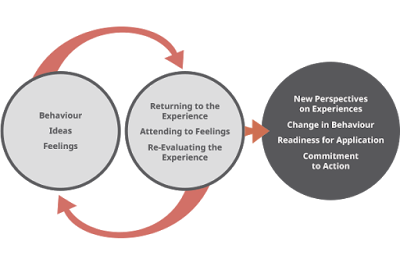
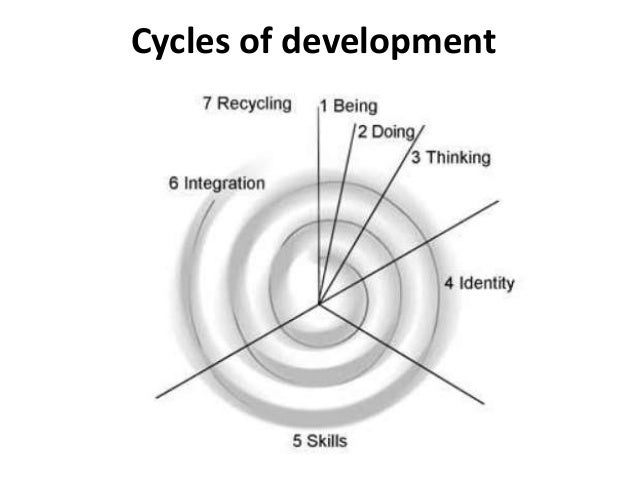

















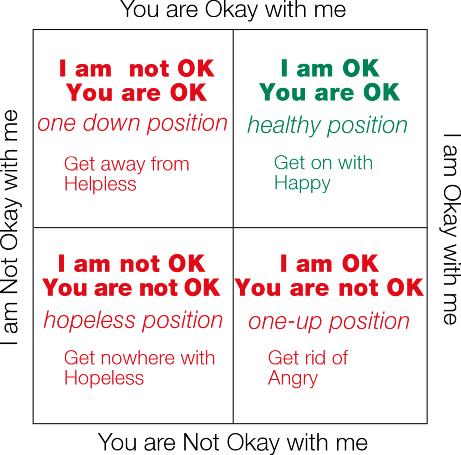





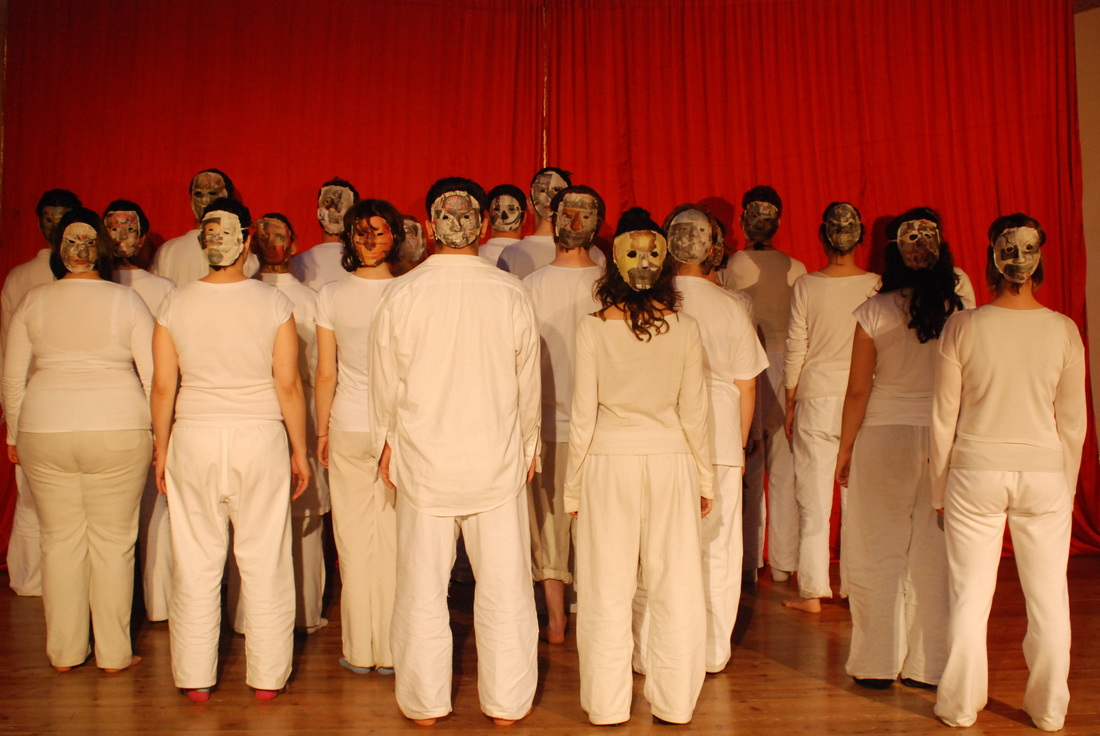
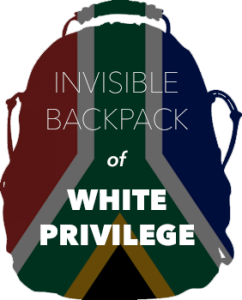

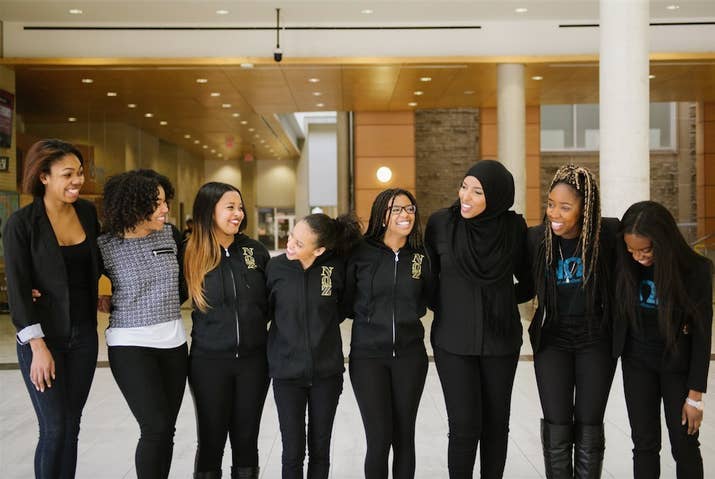








Comments
Post a Comment